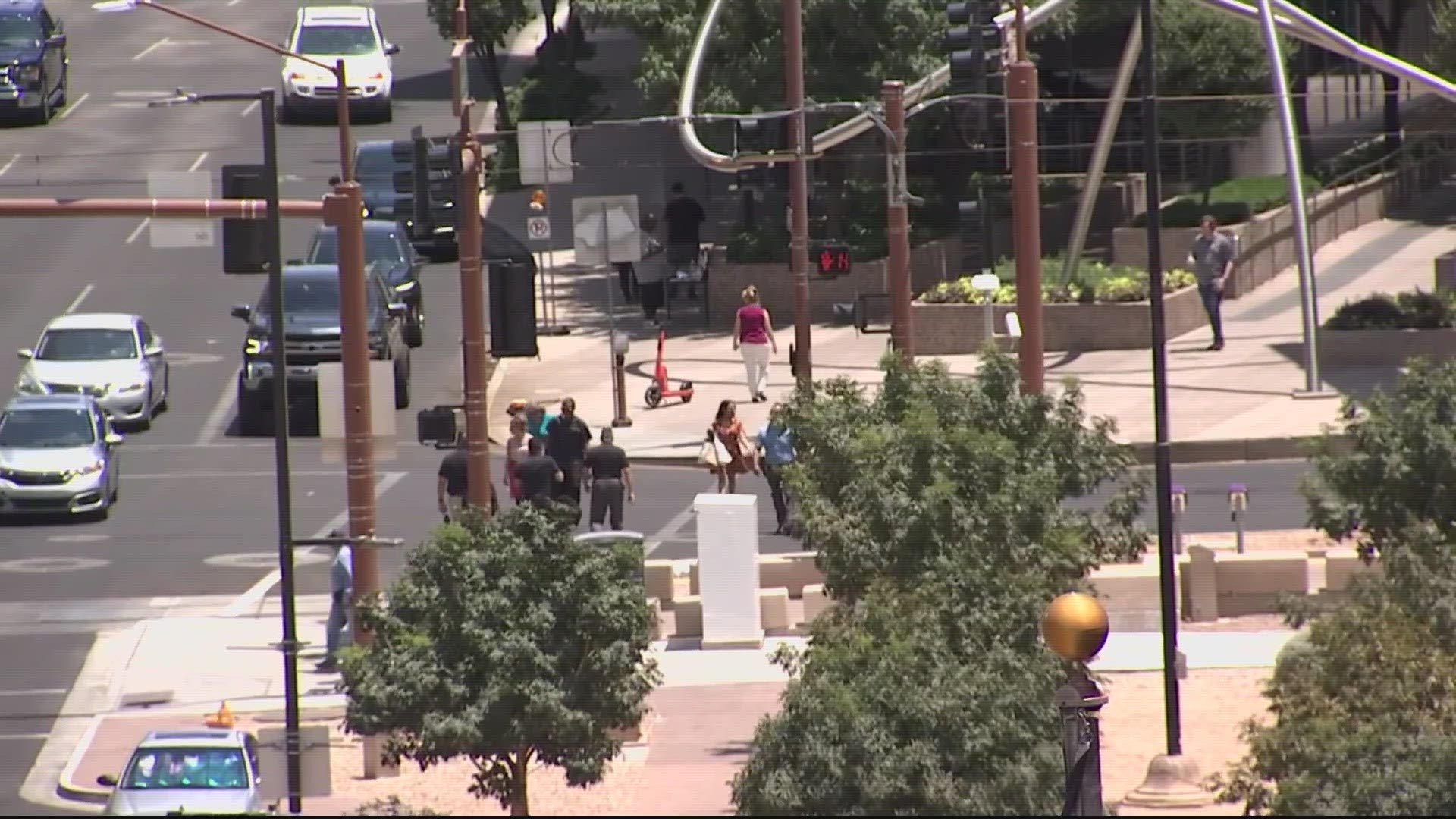WASHINGTON — As a heat wave overtakes a majority of the country, the Centers for Disease Control and Prevention are offering up tips and tricks to stay cool and hydrated for those that can't escape the high temperatures.
Health officials also bust several myths about heat stress, heat illnesses, and what a person should do when they are required to work hard in a hot environment.
Anyone who works outside should be aware of the many risk factors that may affect their heat tolerance. Risk factors that may influence heat illness include high air temperatures and humidity, direct sun exposure, indoor radiant heat sources (ovens, hot manufacturing processes, etc.), limited air movement, physical exertion, not drinking enough fluids (dehydration), personal protective equipment or clothing, certain medications, physical condition, lack of recent exposure (not acclimatized), and advanced age (65+).
The first thing these workers can do to combat any heat-related illness is to make sure they are drinking enough water and getting enough electrolytes.
Health officials say as we sweat, we lose water and electrolytes, which is necessary for our bodies to function properly.
It is recommended that for moderate activity in moderate conditions, each worker should drink one cup of water every 15 to 20 minutes.
Workers should also be reminded to drink water frequently before becoming thirsty in order to maintain good hydration , according to the CDC.
Heath officials say it's extremely important to also remain cool.
As working muscles produce heat at a much higher, faster rate, this increased heat production can result in an increase in body temperature, which above a certain temperature, can be difficult to control.
Therefore, the CDC recommends workers be allowed to take regular rest breaks in the shade or in an air-conditioned area.
The use of reflective clothing, water-dampened cotton clothing (although this may not work when the humidity is very high), and cooling vests with pockets for cold packs may also be beneficial for keeping workers cooler and safer for longer periods of time.
Myths about heat stress, according to the CDC:
- The difference between heat exhaustion and heat stroke is there is no sweating with heat stroke. Heat stroke victims may continue to produce sweat. If a worker is experiencing symptoms of heat stroke (confusion, loss of consciousness, seizures, high body temperature), whether they are sweating or not, it is a life-threatening emergency! Call 911 and try to cool the worker down.
- Taking a break in the air conditioning will ruin your acclimatization. Acclimatization can usually be maintained for a few days of non-heat exposure, so taking a break in the air conditioning will not reduce a worker’s level of acclimatization. And it is a very effective way for workers to cool down in a fairly short period of time.
- Acclimatization will protect you during a heat wave. Acclimatization occurs when a person is exposed to extreme environmental conditions over a 7-10 day period. However, during heat waves air temperatures rise above normal quickly, and workers will not be able to immediately acclimatize to the new, hotter temperatures.
- Salt tablets are a great way to restore electrolytes lost during sweating. They should not be used unless instructed to do so by a doctor. Most people are able to restore electrolytes through normal meals and snacks. In addition, ingestion of too much salt may cause nausea and vomiting.
- My medications/health condition will not affect my ability to work safely in the heat. A worker’s health and medication usage may affect how their body handles high temperatures and heavy physical exertion.
WATCH NEXT:

